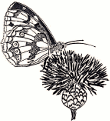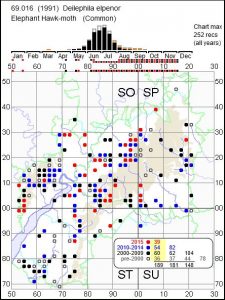 If you are interested in moths then you really need to see our Moth Maps page.
If you are interested in moths then you really need to see our Moth Maps page.
The maps are created and maintained by Guy Meredith. They use moth records sent in by individual recorders to our County Moth Recorders and are well worth exploring.
Immediately below the maps is a lot of other information including a link to the Gloucestershire species lists. On that page you can produce a range of lists, for example, all the species that have been recorded in the middle of November since 2000 – it’s a surprisingly long list. Guy has now added a Highlights Report button to the page, this gives a summary of the moth recording highlights of 2016 (sometime during 2018 that will be replaced by the highlights of 2017). Did you know, for example, three moths were recorded last year that had never been seen previously in the county or that the Silver Y was recorded over a larger area than the Large Yellow Underwing.
Some of the information available via Moth Maps will only interest moth enthusiasts but overall the data collected and its analysis is vitally important for conservation work.
If you record butterflies or moths, even if only occasionally then please pass your records to the County Moth or Butterfly Recorders, you can contact them via our Committee & Contacts page on the menu.
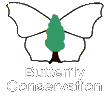
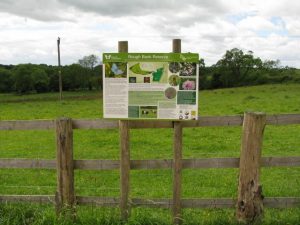
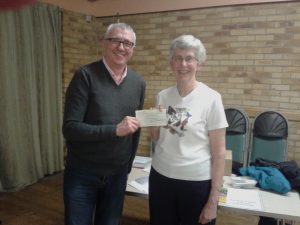
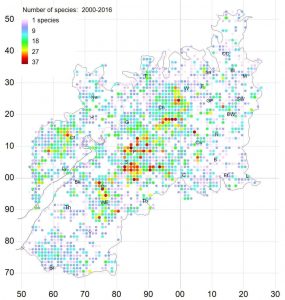
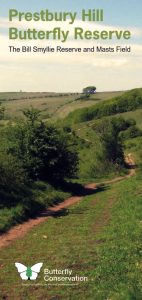
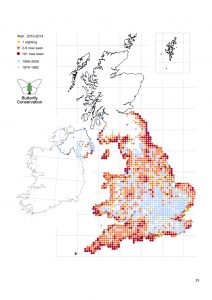
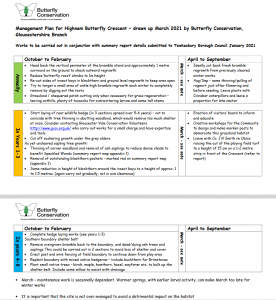
 Internal Pages
Internal Pages
